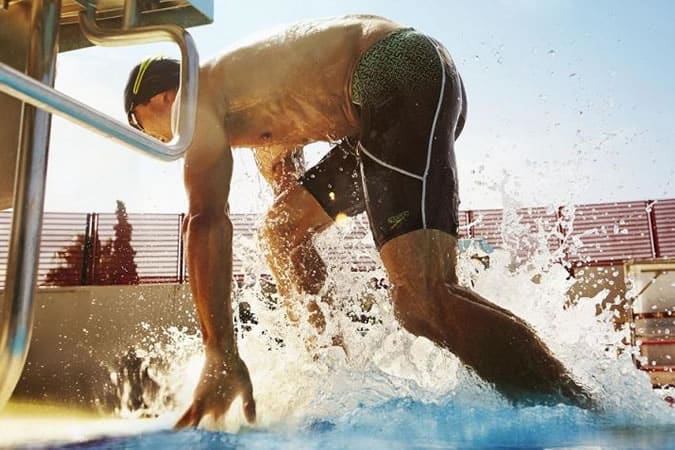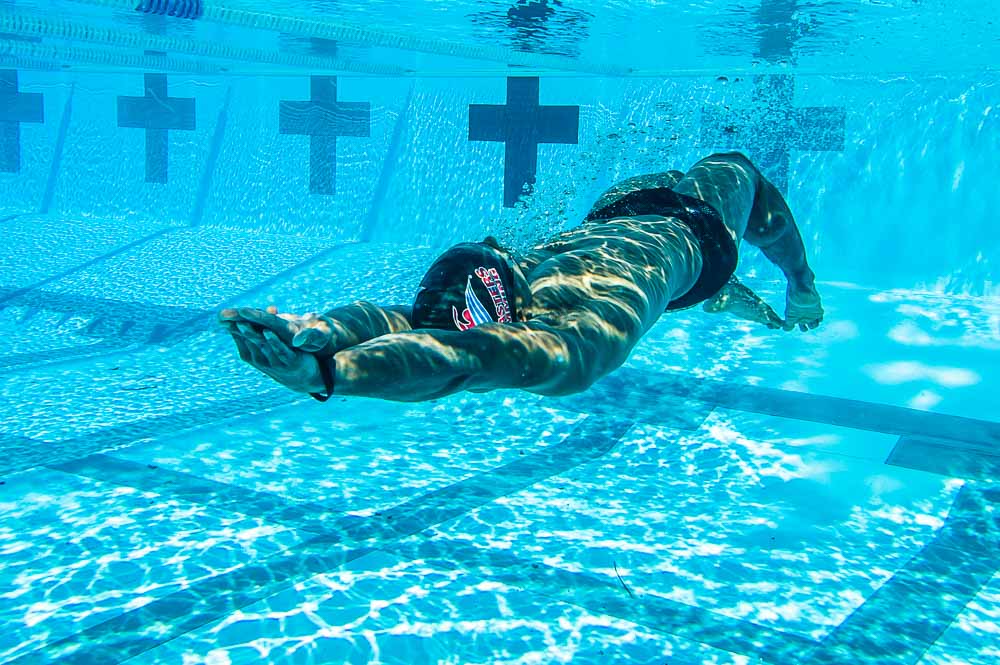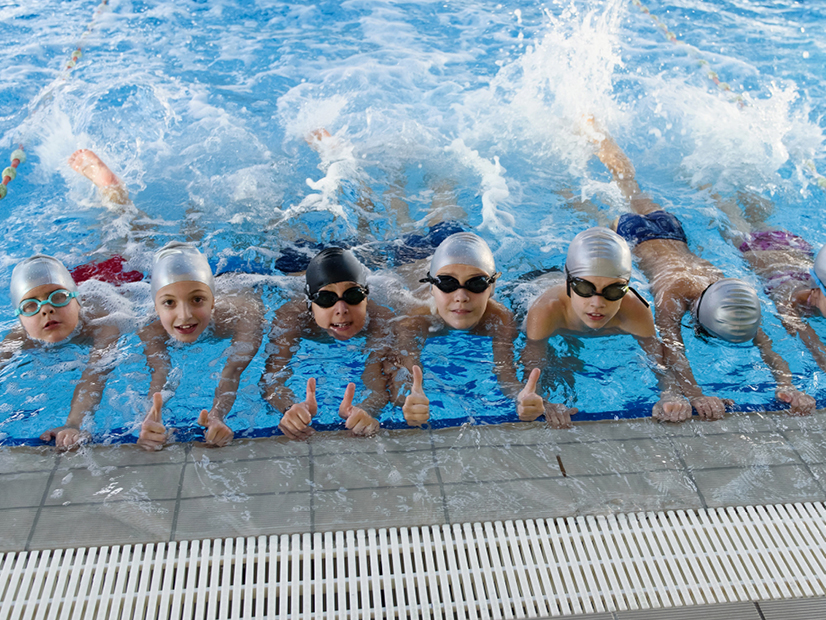Swimming is a sport and recreational activity enjoyed by millions worldwide but what sets swimming apart is the immense range of benefits it offers when practiced consistently throughout the year. In this blog, we’ll dive deep into the physical, mental, and social advantages of swimming all year round, illustrating why it is considered one of the best all-encompassing workouts.

Physical Fitness and Health
Cardiovascular Health
Swimming is an exceptional cardiovascular workout. When you swim, your heart and lungs work together to supply oxygen to your muscles, improving cardiovascular efficiency. Studies have shown that swimming regularly can lower blood pressure, improve circulation, and reduce the risk of heart disease. It’s a full-body workout that enhances heart health and increases lung capacity.
Muscle Strength and Tone
Unlike many other forms of exercise that target specific muscle groups, swimming engages nearly all the major muscle groups in the body. Each stroke—whether it’s freestyle, backstroke, breaststroke, or butterfly—requires coordinated effort from your arms, legs, core, and back muscles. This results in balanced muscle development and toning. The resistance of water adds an extra challenge, making your muscles work harder without the risk of high-impact injuries.
Flexibility and Range of Motion
The range of motion required in swimming strokes helps to improve flexibility. The repetitive stretching and reaching motions enhance joint flexibility and help maintain a healthy range of motion in your shoulders, hips, and spine. This is particularly beneficial as we age, helping to prevent stiffness and maintain mobility.
Low-Impact Exercise
Swimming is a low-impact activity, meaning it puts minimal stress on the joints. This makes it an ideal form of exercise for individuals with arthritis, joint pain, or those recovering from injuries. The buoyancy of water supports your body weight, reducing the strain on your joints while still providing a rigorous workout. This low-impact nature makes swimming accessible to people of all fitness levels and ages.
Mental Health Benefits
Stress Relief
The calming effect of water and the rhythmic nature of swimming can significantly reduce stress levels. The sensation of floating and the repetitive movements create a meditative state, helping to clear the mind and reduce anxiety. Regular swimming has been linked to decreased levels of the stress hormone cortisol, promoting relaxation and well-being.
Mental Clarity and Focus
Swimming requires coordination and concentration, which can improve cognitive function. The bilateral cross-pattern movements involved in swimming stimulate both hemispheres of the brain, enhancing cognitive processing and learning. This can lead to improved problem-solving skills and greater mental clarity.
Improved Sleep
Engaging in regular physical activity like swimming can improve sleep quality. The physical exertion helps regulate your sleep patterns, making it easier to fall asleep and stay asleep. Additionally, the relaxation and stress-relief benefits of swimming contribute to a more restful night’s sleep.
Skill Development and Performance Enhancement
Technique Improvement
Swimming year-round allows for continuous improvement of technique. Whether you are a competitive swimmer or a recreational enthusiast, regular practice helps refine your strokes, breathing techniques, and overall efficiency in the water. This constant refinement leads to better performance and reduced risk of injury.
Endurance Building
Swimming is an excellent way to build endurance. The resistance of water makes your muscles work harder, increasing stamina over time. Consistent training enhances cardiovascular endurance, allowing you to swim longer distances with greater ease. This endurance is beneficial not only for swimming but also for other physical activities and daily tasks.
Race Readiness
For competitive swimmers, year-round training is essential for maintaining peak performance. It ensures that swimmers stay in top physical condition and are always prepared for competitions. Regular training sessions help swimmers maintain their speed, strength, and technique, giving them a competitive edge.
Overall Health Benefits
Weight Management
Swimming is a highly effective exercise for burning calories and managing weight. Depending on the intensity and duration, swimming can burn as many calories as running, but without the impact on your joints. It helps build lean muscle mass, which in turn increases your metabolism and aids in weight management.
Boosted Immune System
Regular physical activity, including swimming, can strengthen the immune system. Exercise promotes better circulation, which allows immune cells to travel more efficiently throughout the body, enhancing their ability to fight off infections. Swimming also reduces stress, which can otherwise weaken the immune response.
Increased Lifespan
Engaging in regular physical activity like swimming has been associated with a longer, healthier life. Studies have shown that swimmers have a lower risk of chronic diseases such as heart disease, diabetes, and certain cancers. The combined physical, mental, and social benefits of swimming contribute to overall longevity and quality of life.
Social and Emotional Benefits
Social Interaction
Swimming can be a social activity, whether you’re joining a swim club, taking classes, or simply swimming with friends. These social interactions foster a sense of community and belonging, which are essential for emotional well-being. Being part of a swimming group provides motivation, encouragement, and support.
Confidence and Self-Esteem
Achieving swimming goals and improving skills can boost self-confidence and self-esteem. Learning to swim, mastering new strokes, or improving your lap times can give you a sense of accomplishment. This confidence can extend beyond the pool, positively impacting other areas of your life.
Discipline and Goal Setting
Regular swimming instills discipline and helps individuals set and achieve personal and competitive goals. The structure and routine of swimming practice teach time management, and perseverance skills. These attributes are valuable in all aspects of life, from academics and career to personal relationships.
Rehabilitation and Therapy
Injury Recovery
Swimming is often used in physical therapy and rehabilitation due to its low-impact nature. It provides a safe environment for recovering from injuries, as the buoyancy of water reduces stress on healing tissues. Aquatic therapy can help improve strength, flexibility, and range of motion during the recovery process.
Managing Chronic Conditions
Swimming is beneficial for individuals with chronic conditions such as arthritis, fibromyalgia, and multiple sclerosis. The warmth and buoyancy of the water soothe pain and stiffness, making movement easier and less painful. Regular swimming can improve mobility, reduce symptoms, and enhance overall quality of life for those with chronic health issues.
Conclusion
Swimming year-round offers a myriad of benefits that contribute to overall physical fitness, mental well-being, and social health. Its unique combination of cardiovascular, strength, and flexibility training, along with its low-impact nature, makes it an ideal exercise for people of all ages and fitness levels. Beyond the physical advantages, swimming provides mental clarity, stress relief, and social interaction, enhancing the quality of life in numerous ways. Whether you’re looking to improve your health, recover from an injury, or simply enjoy a fun and effective workout, swimming all year round is a smart choice. Dive in and experience the comprehensive benefits for yourself!









